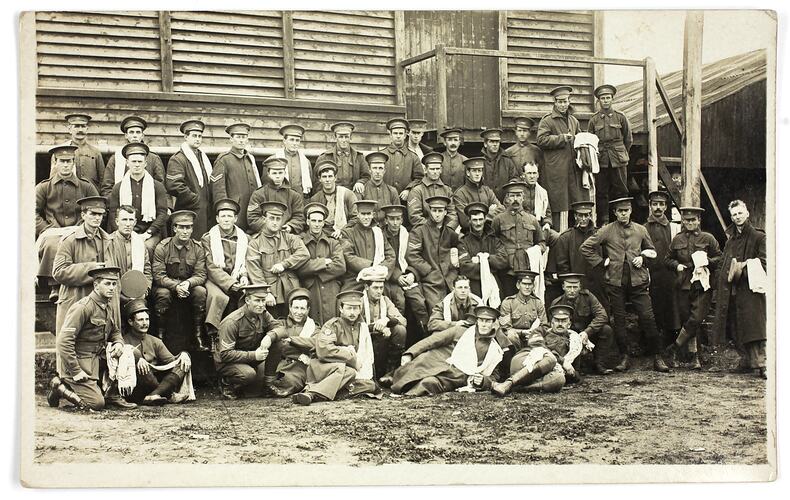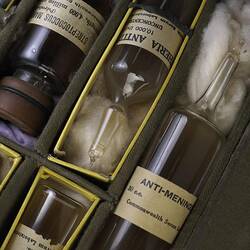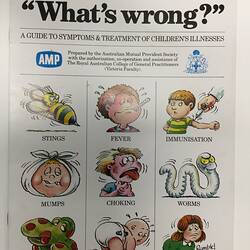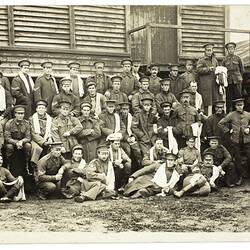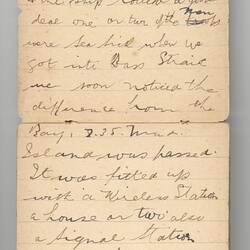Measles is a highly contagious disease caused by a paramyxovirus virus. It is communicated through the air and direct contact, infects the respiratory tract and then spreads throughout the body. It is characterized by a high fever and rash, and can cause significant mortality, mostly as a result of complications such as encephalitis and pneumonia. It is particularly dangerous to young children and older adults. No specific antiviral treatment for measles is available, although treatment of symptoms and the use of antibiotics to prevent secondaries has improved outcomes.
Measles outbreaks occurred in Australia from at least the early 1830s, and many immigrant ships to the Australian colonies reported outbreaks during their voyages. Amongst these was the David Scott, a female emigrant ship which arrived in Sydney in 1834, and the emigrant ship Garrow, which sailed from Belfast to Sydney in 1838 and reported 43 cases on its 116-day voyage. Some of these arrivals led to the spread of measles into Indigenous communities, who lacked immunity, leading to tragic levels of mortality.
From the 1850s, the faster voyages of the clipper ships meant that outbreaks of measles had not run their course before the ship arrived in Australia, so they were more liable to spread into the new community context. In December 1851 the Eagle arrived was placed in quarantine on arrival in Melbourne, with passengers suffering measles, smallpox and dysentery. In September 1852 the Borneouff arrived off Point Henry, Geelong, having suffered 83 deaths on board of around 800 passengers, mainly from scarlet fever and measles.
Measles first reached epidemic proportions in Victoria in 1853-54, when increasing urbanisation and crowding associated with the gold rush provided ideal conditions for the spread of contagion. For the remainder of the 19th century measles epidemics repeatedly broke out in Victoria. In November 1860 the Central Board of Health reported 'excessive mortality' amongst children in Melbourne in the past six months, with as many as 300 deaths and still-increasing numbers from scarlatina and measles. The Argus suggested this was 'not to be wondered at, when we look at the undrained condition of our city, and the wretched character and unhealthy situation of the smaller class of habitations. Even the copious supply of water from the Yan Yean [reservoir] .is an instrument of evil, and facilitates the saturation of the soil with that filth by which the most deadly gases are subsequently generated.' Close sleeping quarters, and lack of ventilation, were also blamed.
A worse outbreak reported in 1874-75. Death rates were sometimes as high as 200 per 100,000 cases. Of particular note was that measles weakened sufferers' immune systems, making them more vulnerable to scarlet fever and tuberculosis, also circulating in the community.
Death rates from measles stabilized in the 20th century, although measles continued to circulate and break out periodically, particularly in group situations such as military camps. A measles vaccine was released in 1963 and introduced to Victoria in 1969.
References
Measles, World Health Organisation, https://www.who.int/news-room/fact-sheets/detail/measles, accessed 5/6/2020.
'Diseases and Epidemics', Janet McCalman, Encyclopaedia of Melbourne, http://www.emelbourne.net.au/biogs/EM00473b.htm, accessed 5/6/2020.
1846 'THE CLIMATOLOGY AND DISEASES OF AUSTRALIA.', The Port Phillip Patriot and Morning Advertiser (Vic. : 1845 - 1848), 4 August, p. 2. , viewed 05 Jun 2020, http://nla.gov.au/nla.news-article226348725.
1849 'Shipping Intelligence.', The Melbourne Daily News (Vic. : 1848 - 1851), 16 February, p. 2. , viewed 05 Jun 2020, http://nla.gov.au/nla.news-article226471960.
P.J. Dowling, 1997. "A Great Deal of Sickness": Introduced diseases among the Aboriginal People of colonial Southeast Australia 1788-1900. PhD, ANU, Canberra.
B.J. Paterson, M.D. Kirk, A. Scott Cameron, C. D'Este & D.N. Durrheim, 2013. 'Historical data and modern methods reveal insights in measles epidemiology: a retrospective closed cohort study'. BMJ Open. 2013; 3(1).
J.H.L. Cumpston, 1927. The history of diphtheria, scarlet fever, measles, and whooping cough in Australia. Service publication No. 37. Canberra: Commonwealth of Australia, Department of Health, 1927.
J.H.L. Cumpston, 1989. Health and Disease in Australia. A History, (edited M.J. Lewis), Australian Government Printing Service, Canberra.
1851 'Advertising', The Argus (Melbourne, Vic. : 1848 - 1957), 29 December, p. 3. , viewed 09 Jun 2020, http://nla.gov.au/nla.news-article4782457.
1852 'GEELONG.', The Argus (Melbourne, Vic. : 1848 - 1957), 8 September, p. 2. , viewed 09 Jun 2020, http://nla.gov.au/nla.news-article4787066.
1860 'MONDAY, NOVEMBER 26, 1860.', The Argus (Melbourne, Vic. : 1848 - 1957), 26 November, p. 4. , viewed 09 Jun 2020, http://nla.gov.au/nla.news-article5693906.
More Information
-
Keywords
-
Authors
-
Article types
